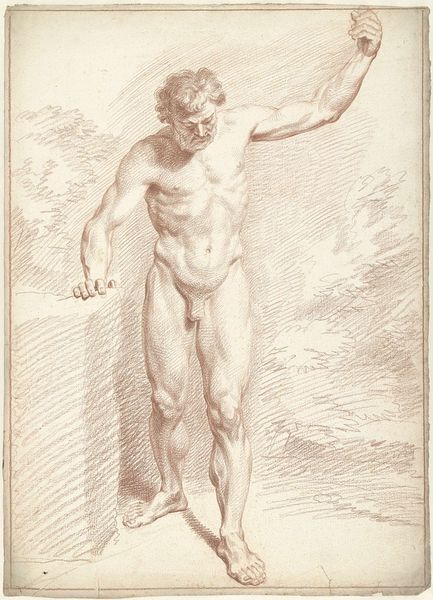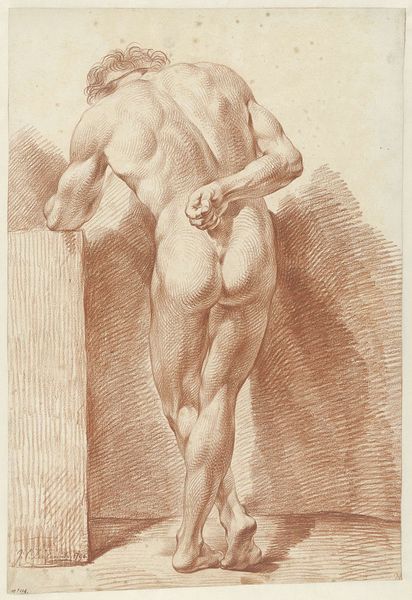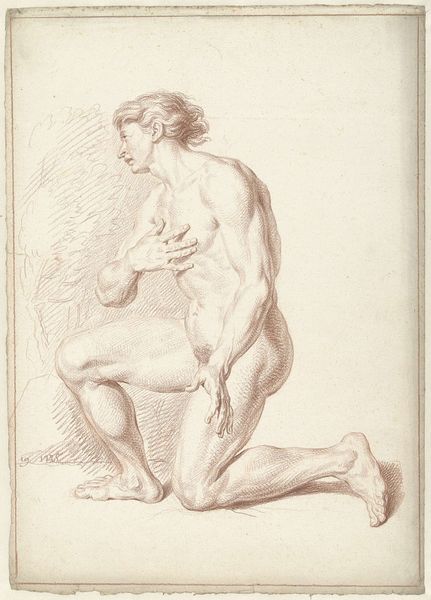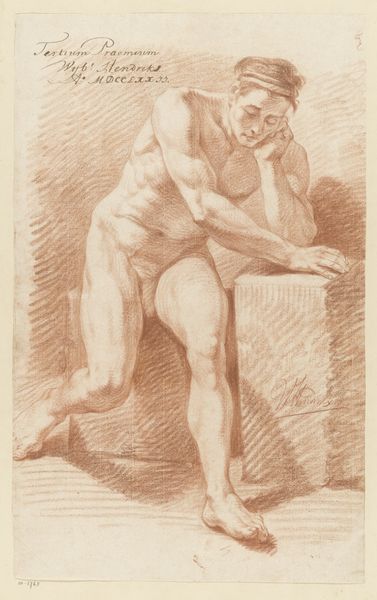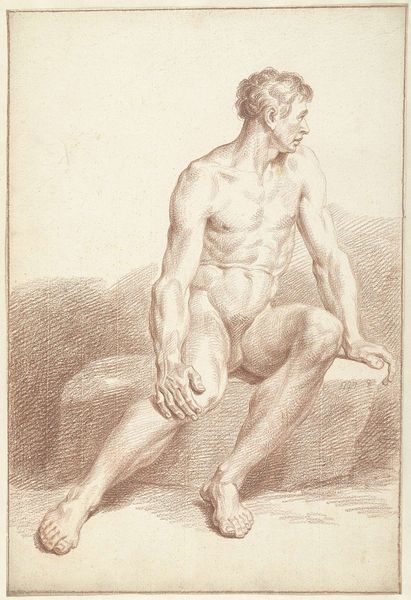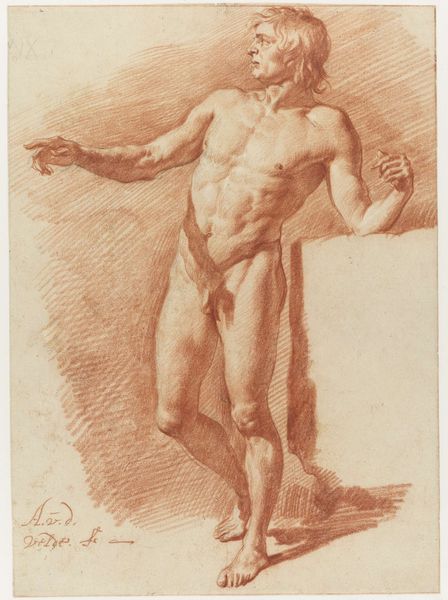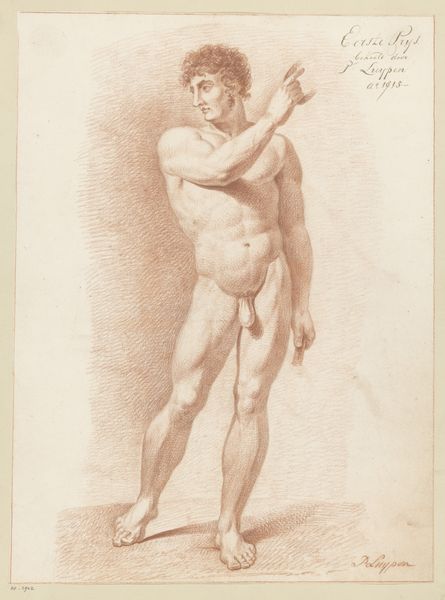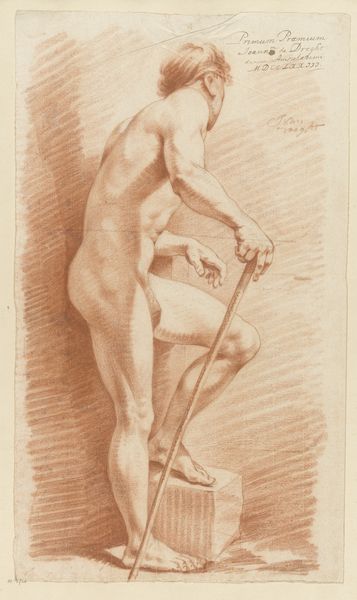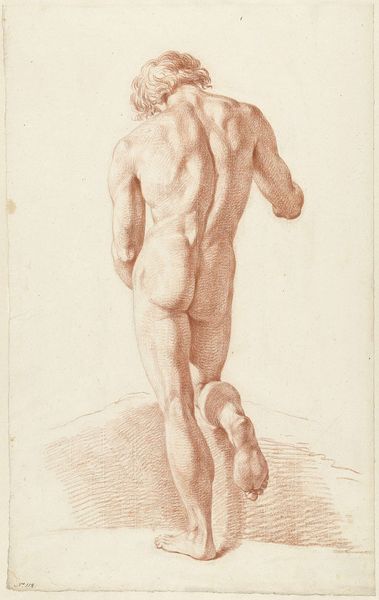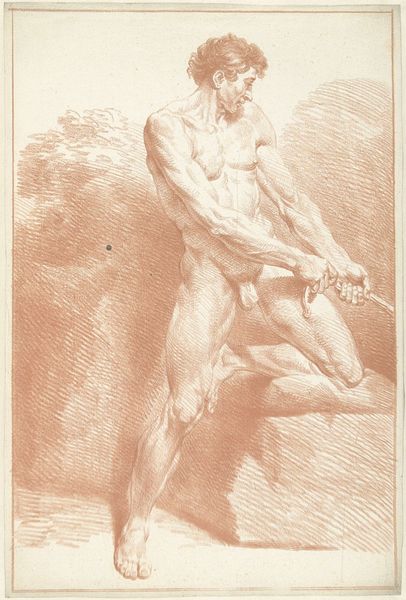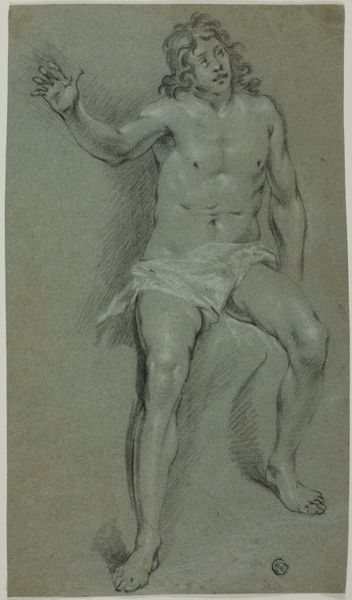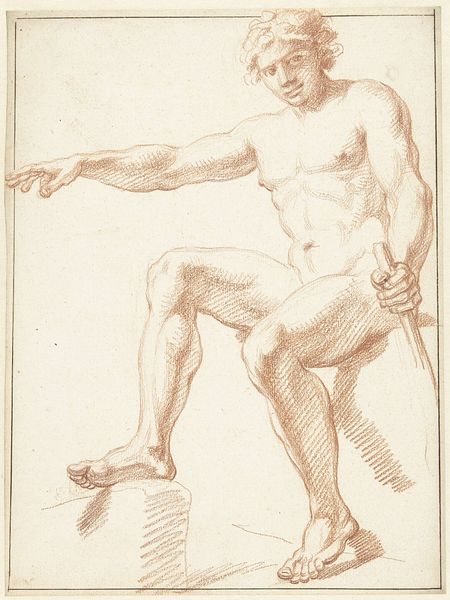
drawing, pencil
#
drawing
#
baroque
#
figuration
#
pencil drawing
#
pencil
#
academic-art
#
nude
Dimensions: height 470 mm, width 330 mm
Copyright: Rijks Museum: Open Domain
Curator: This drawing, currently residing at the Rijksmuseum, is titled "Mannelijk naakt, staand," or "Male Nude, Standing," and is attributed to Louis Fabritius Dubourg, dating to sometime between 1703 and 1775. Editor: There's an undeniable tension in the figure; he seems both imposing and vulnerable, standing nearly frontal with arms clasped tightly, drawn using only a reddish pencil. It’s stark. Curator: Indeed. This is an example of academic art firmly rooted in the Baroque tradition. The contrapposto stance, the musculature, these are conscious nods to classical ideals revitalized. He almost seems like a preparatory study. Editor: Perhaps it was, but what tools and labor were involved to bring this image to us now? I wonder about the original context, its possible use by students copying the image over and over. What stories does the material process whisper? Curator: I see in this image echoes of centuries of understanding male power through its representation, recalling the classical ideal in Baroque’s dynamism. Editor: Interesting. I see not just a portrayal of the male body, but the labor involved in depicting the male body according to set expectations and with restricted tools and methods. It forces me to consider both the maker and the model laboring within systems that define them. The physical demand placed on both during production. Curator: True, those limitations of academic style do provide constraints on the maker. He might have learned this stance and his material choice through various atelier-based instruction. Editor: Precisely! We're not just viewing the *figure* but the structured process and systems behind this sort of piece being produced. I wonder how it circulated, too—did this study influence contemporary designs? Curator: I see something timeless about the image and yet also marked by a period’s specific expectations of beauty and virtue. Editor: A fitting tension given the period in which the art was likely made, where many were attempting to balance old power structures while the seeds of the Enlightenment began to germinate. I like that.
Comments
No comments
Be the first to comment and join the conversation on the ultimate creative platform.
